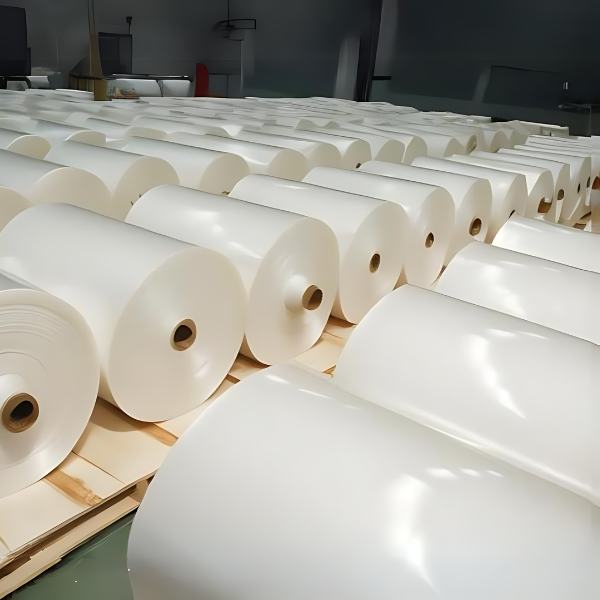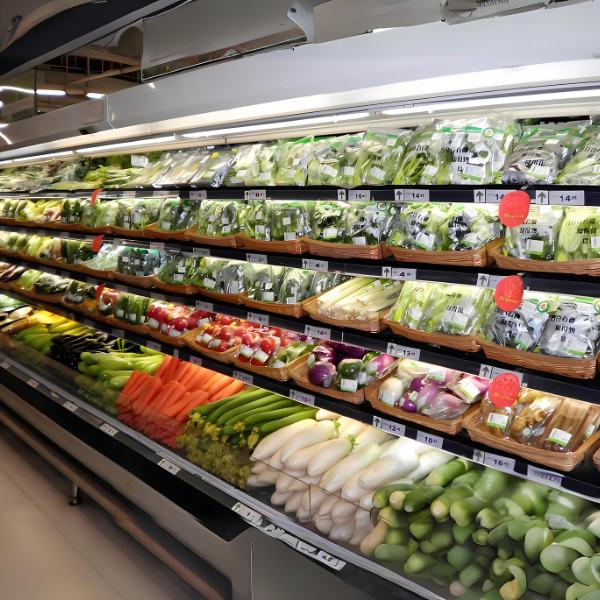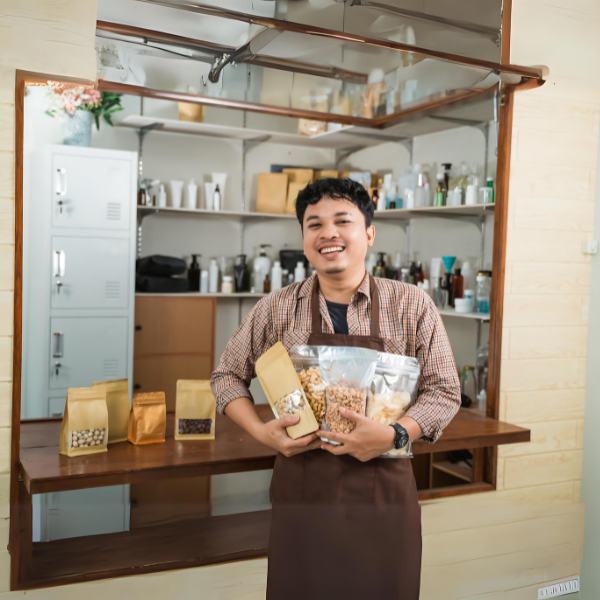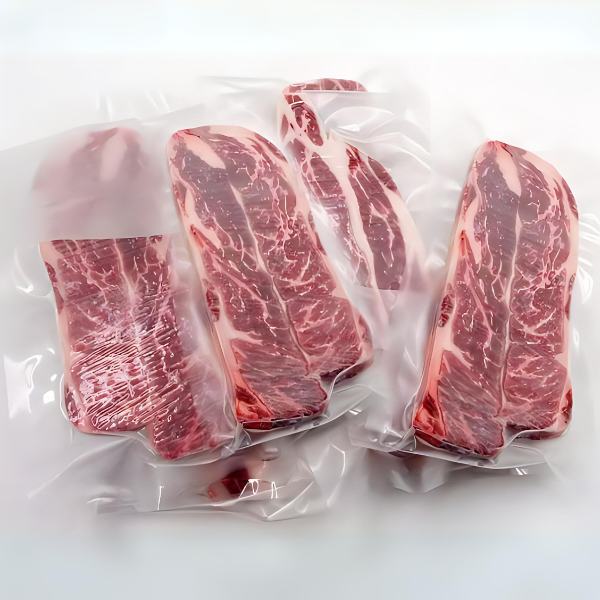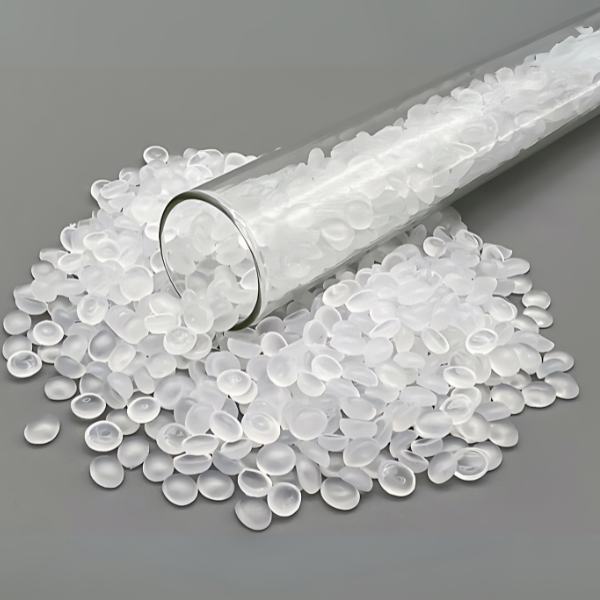Meat products constitute a major category in food packaging. Due to the inherent characteristics of meat products, such as high protein content, rich nutrients, susceptibility to spoilage, and diverse processing methods, they demand more stringent packaging requirements. This article will discuss the main characteristics of meat packaging and the commonly used packaging types.
The purpose of packaging is to prevent bacterial contamination of the product, thereby ensuring its quality. Packaging also serves an advertising role, attracting the attention of consumers. At various stages of manufacturing, distribution, sales, and consumption, from the factory to the consumer’s hands, the product is always in contact with human hands, hence contamination can occur at any time. Therefore, packaging is used to prevent bacterial contamination.
The majority of packaging materials used for meat products are plastics. Plastics have a broader range of packaging properties than paper and metal, with a single packaging material being able to possess multiple properties. Furthermore, the performance of packaging can be significantly enhanced through the lamination and coating technology of thin plastic films, compensating for the shortcomings of single-layer films. Lamination/coating technology allows for the development of films for multiple uses.
Factors affecting the shelf life of meat products
Characteristics of Meat Packaging
Oxygen Barrier
This is the property of blocking oxygen permeability. Not just oxygen, but the passage of other gases through plastic films is unrelated to the molecular size of the gas. Typically, this occurs in two steps: initially, the gas dissolves in the molecules of the film, and then it permeates through diffusion. The oxygen barrier property is suitable for the packaging of all meat products except for fresh meat.
Especially important for vacuum packaging and gas flushing packaging, oxygen turns hemoglobin into methemoglobin, causing discoloration, promoting lipid oxidation, and the growth of aerobic microorganisms. Hence, preventing the product from coming into contact with oxygen is extremely important for maintaining product quality and improving shelf life.
Moisture Barrier
This property refers to blocking the passage of water vapor. Films without hydrophilic hydroxyl and carboxyl groups in their molecules are considered to have good moisture barrier properties. The moisture barrier property changes significantly with temperature and applies to all meat product packaging.
If the product’s moisture escapes as water vapor from the inside of the packaging film or absorbs moisture permeating from the outside, the product’s flavor, texture, and content may change. This is particularly important for the packaging of dry sausages with low moisture content and for preventing the natural loss of pre-weighed products.
Light Blocking
This refers to blocking light, especially ultraviolet light in the 320-380 nm wavelength range. This property is important for vacuum-packed sliced products, colored products, and smoked products. Transparent films do not block ultraviolet light. Although high-density polyethylene has some light-blocking properties, the film is opaque. Due to the importance of light-blocking properties, further exploration of light-blocking methods can be conducted:
- Adding ultraviolet absorbable, i.e., adding ultraviolet absorbers to the packaging material. However, in recent years, the use of ultraviolet absorbers in food packaging materials has been prohibited.
- Reflecting or absorbing light through printing. This method uses printing inks to absorb or reflect light or mechanically creates embossed patterns on the film surface using embossing rollers, which reflect light. Black and white inks absorb or reflect light.
- Ultra fineink particles method, blocks light by scattering shorter-wavelength ultraviolet light within the film, allowing longer-wavelength visible light to pass through, and enabling the printing on the product packaging to be visible.
- Selecting films or foils that inherently block light as the light-blocking layer of the packaging material, such as aluminum-coated films or aluminum foil.
Impact Resistance
This property applies to all packaging, especially important for heavy items and tight packaging where there is no gap between the casing and the product. The impact resistance of packaging materials can be ensured through a balance of tensile strength, elongation at break, and impact strength. Films with this property include polyvinyl alcohol, polyvinyl chloride, polyvinylidene chloride, and stretched nylon.
Cold Resistance
Even at low temperatures, the film does not become brittle and maintains its strength and impact resistance. Generally, storing meat products at -10 to 0°C is not a problem, but if storing frozen meat products at -15°C, the film’s cold resistance must be considered as it directly affects the seal strength. Cold-resistant packaging includes polyamide resin, polyethylene (low density), polyester, polypropylene (stretched), and polypropylene (non-stretched).
Heat Resistance
This refers to a high softening point and the property of not deforming even when heated (e.g., polyvinyl chloride). Since products expand when heated, it is necessary to ensure the heat strength of the film. This property is suitable for packaging that undergoes secondary sterilization. Polyester(AlOx Coated Film), polyvinylidene chloride (PVDC Coated Film), polypropylene (non-stretched), polypropylene (stretched), and polyethylene (high density) have good heat resistance.
Formability
This refers to the property of blow molding the film into shape with air after it softens upon heating (air pressure molding) or forming the film along a mold by suction (vacuum forming) when packaging tightly around the product. Good formability means the film can be evenly stretched on all sides with minimal force after heating.
Oil Resistance
This means that the fats and oils exuded from meat products cannot permeate through the packaging material to the outside of the film. For many meat products, fats and oils are substances that ensure flavor, and since meat products contain a large amount of fats and oils, it is necessary to use packaging materials with oil resistance to ensure their quality.
Thermal Shrinkage
The thermal shrinkage property of meat packaging films is suitable for the sealed body packaging of sausages, cooked meats, and other meat products.
Printing and Decoration
Another major function of product packaging is to facilitate sales and enhance consumers’ desire to purchase.
Meat Product Packaging Methods
Fresh Meat Packaging Methods
Film Wrapping for Fresh Meat
To prevent quality loss of fresh meat, a layer of plastic film can be applied to the surface of the meat or cut meat during processing. This film should have high transparency to clearly show the natural color of the fresh meat. Its oxygen transmission rate should be high to maintain the bright red color of oxymyoglobin, while its water vapor transmission rate should be low to prevent moisture loss on the surface of the raw meat, which can lead to color concentration, darkening of the meat color, and muscle drying and shrinkage.
The film should have high moisture resistance strength, flexibility, non-toxicity, adequate cold resistance, and good fat permeability prevention. Currently, polyethylene stretch film is commonly used. Biaxially stretched polyethylene film has thermal shrinkage properties; when wrapped around meat blocks and subjected to instant hot air, it shrinks tightly around the contents.
Vacuum Packaging for Fresh Meat
Vacuum packaging of fresh meat involves boning and cutting the carcasses of slaughtered livestock into pieces without exposing bone tips, and then vacuum packaging them in retractable film bags. Vacuum packaging creates an oxygen-deficient environment inside the packaging bag, inhibiting microbial growth, slowing down fat oxidation in the meat, reducing moisture loss, and minimizing storage space.
Fresh meat in vacuum packaging can be stored for 5-7 days at room temperature and up to half a month under refrigerated conditions, although the color of the meat turns dark purple. The plastic film used for vacuum packaging must have good gas barrier properties, with an oxygen transmission rate of less than 40 ml/m²24hatm*23°C. Therefore, single films are generally not suitable for vacuum packaging, and composite films are used instead. Common materials include EVA (ethylene-vinyl acetate)/PVDC (polyvinylidene chloride)/EVA, PP (polypropylene)/PVDC/PP, Ny (nylon)/LLDPE (Liner low-density polyethylene), and Ny/Surlyn (ionomer polymer).
Preserving fresh meat at room temperature has always been challenging, mainly because fresh meat cannot be sterilized at room temperature. Currently, vacuum packaging is combined with irradiation sterilization to effectively solve this issue. Before irradiation, fresh meat is vacuum-sealed with packaging materials that are low-temperature resistant, radiation-resistant, mechanically strong, and non-toxic to food, and then subjected to high-dose irradiation sterilization, with doses ranging from 1 to 6 Mrad. Fresh meat treated by this method can be stored for over two years at room temperature.
Gas Flushing Packaging for Fresh Meat
Gas flushing packaging involves sealing fresh meat in containers with good sealing performance and altering the internal gas environment of the packaging container to slow down oxidation, inhibit microbial growth, and prevent enzymatic reactions, thereby extending the shelf life of the product. The protective gas used for fresh meat gas flushing packaging consists of a mixture of 70%-80% oxygen and 20%-30% carbon dioxide. Fresh meat in gas flushing packaging can be stored for half a month under good refrigeration conditions.
Packaging Methods for Cooked Meat
Products Meat products can generally be divided into cured, soy-sauce marinated, smoked, dried, fried products, sausages, etc., which vary significantly in moisture content, salt content, fat content, and susceptibility to microbial attack. For example, cured meat can be stored for 3 months in a ventilated, dry place. Soy-sauce marinated products, to preserve their original flavor, have low moisture and salt content and require canning under anaerobic conditions or sterilization after packaging to create an oxygen-free environment.
Sausage Products – Synthetic Casings Initially
natural casings were used for sausage products, but natural casings harbor microbial colonies that can grow and reproduce on the surface of the casings, and their low gas barrier properties lead to the loss of moisture and aroma in meat products. Nowadays, synthetic casings, such as PVDC, PE, PET, etc., are commonly used to replace natural casings.
Products like Cured Meat and Ham – Vacuum Packaging
Cured meat and ham products are vacuum packaged. Materials suitable for vacuum packaging should have high gas and water vapor barrier properties along with other mechanical properties. Common materials include copolymer-coated cellulose composite film/PE, PET/PE, NY/PE composite film, and plastic and aluminum foil composite materials. Some also use a combination of vacuum extraction and thermal shrinkage body packaging.
Smoked, Dried, and Fried Products – Gas Flushing Packaging
Smoked, dried, and fried products can be gas-flushing packaged. A mixture of oxygen and carbon dioxide is filled into the sealed packaging container to prevent the oxidation of fats and meat pigments and inhibit microbial reproduction. Common materials include PET/PE, BOPP (biaxially oriented polypropylene)/aluminized PP, PET/aluminum foil/PE,
etc.
Soy-Sauce Marinated Products – Metal Cans, Glass Bottles, Cooking Bags
Soy-sauce marinated products can be packaged in metal cans, glass bottles, or composite material cooking bags.
With advancements in flexible packaging technology, the packaging, storage conditions, and the variety of processed meat products have greatly diversified. These products differ in moisture content, processing methods, sterilization thoroughness, and the amount of added seasoning, leading to significant differences in packaging and storage requirements.
Appropriate packaging methods, materials, and equipment should be selected based on specific circumstances to extend the shelf life and improve the longevity of food products.








